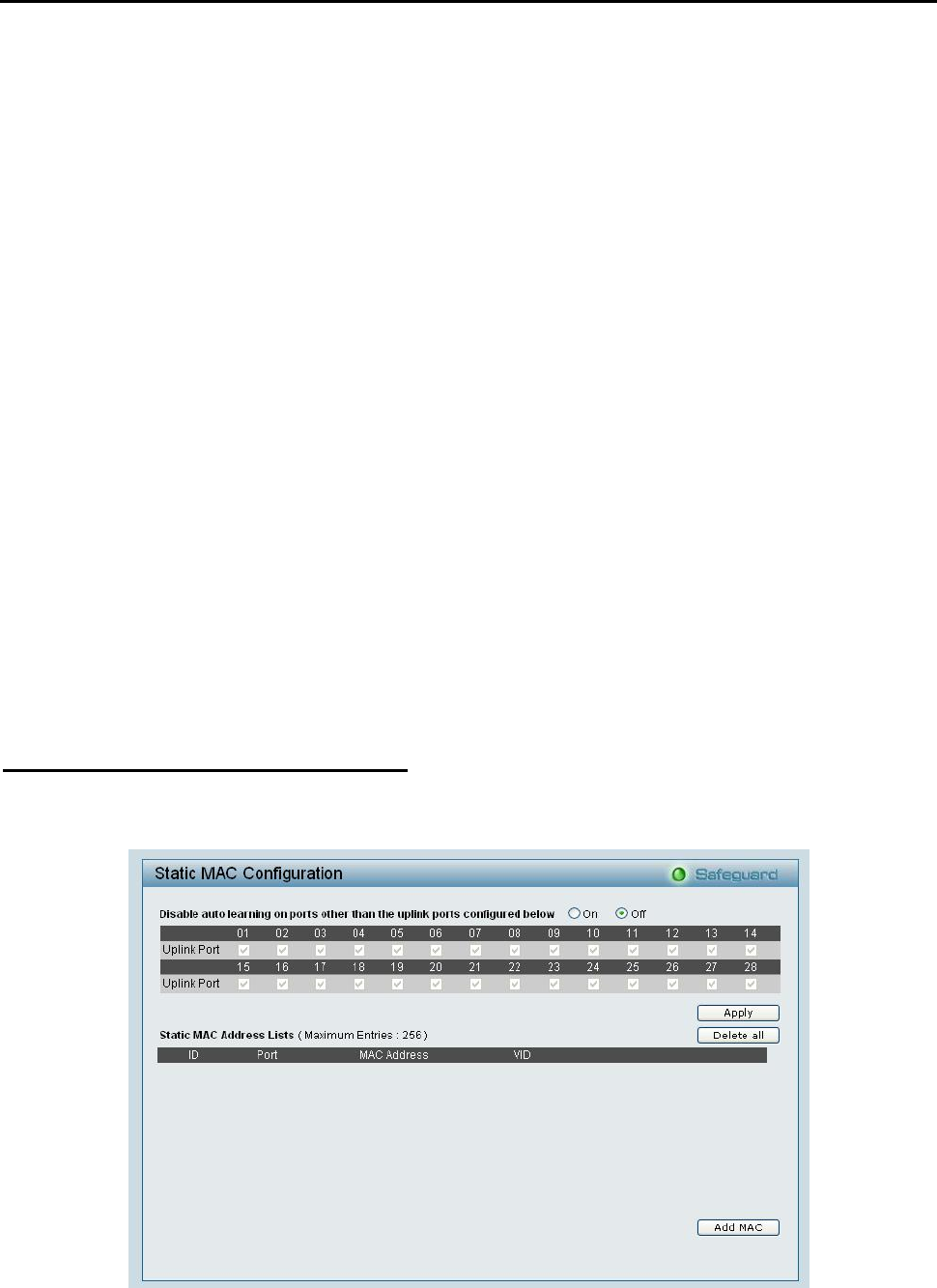
5 Configuration D-Link Web Smart Switch User Manual
QuietPeriod (0 – 65535 sec): Sets the number of seconds that the switch remains in the quiet state
following a failed authentication exchange with the client. Default is 80 seconds
SuppTimeout (1 – 65535 sec): This value determines timeout conditions in the exchanges between the
Authenticator and the client. Default is 12 seconds.
ServerTimeout (1 – 65535 sec): Sets the amount of time the switch waits for a response from the client
before resending the response to the authentication server. Default is 16 seconds.
MaxReq (1 – 10): This parameter specifies the maximum number of times that the switch retransmits an
EAP request (md-5challnege) to the client before it times out the authentication session. Default is 5 times.
ReAuthPeriod (1 – 4294967295 sec): This command affects the behavior of the switch only if periodic re-
authentication is enabled. Default is 3600.
To establish 802.1X port-specific assignments, select the From Ports / To Ports and select Enable.
802.1X Port Access Control: Three type of Port Access Control State can be "Force Authorized", "Force
UnAuthorized", and "Auto".
Select Force Authorized to disable 802.1X and cause the port to transition to the authorized state without
any authentication exchange required. This means the port transmits and receives normal traffic without
802.1X-based authentication of the client.
If Force Unauthorized is selected, the port will remain in the unauthorized state ignoring all attempts by the
client to authenticate. The Switch cannot provide authentication services to the client through the interface.
If Auto is selected, it will enable 802.1X and cause the port to begin in the unauthorized state, allowing only
EAPOL frames to be sent and received through the port. The authentication process begins when the link
state of the port transitions from down to up, or when an EAPOL-start frame is received. The Switch then
requests the identity of the client and begins relaying authentication messages between the client and the
authentication server.
The default setting is Auto.
Security > MAC Address Table > Static MAC
This feature provides two distinct functions. The Disable Auto Learning table allows turning off the function
of learning MAC address automatically, if a port isn't specified as an uplink port (for example, connects to a
DHCP Server or Gateway). By default, this feature is Off (disabled).
Figure 92 – Security > Static Mac Address
To initiate the removal of auto-learning for any of the uplink ports, click On to enable this feature, and then
select the port(s) for auto learning to be disabled.
5
5
5
5


















